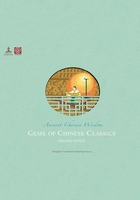
茶经 (chá jīng)
The Classic of Tea
Brewing up tea facts and figures
It goes without saying that tea is one of the symbols of China, a necessary part of Chinese people’s daily life and an essential part of their culture. Naturally, more than 1,200 years ago, China produced the world’s very first tea encyclopedia, the “Classic of Tea.”
The valuable tea treatise was authored by Lu Yu (733-804 AD), known in China as the Sage of Tea because of his unparalleled contributions to the development of tea culture. He literally turned tea from what was deemed as a traditional medical herb into the nation’s most popular drink.
According to some historical books, Lu was born an orphan in today’s Tianmen in central China’s Hubei Province and was adopted and raised by a monk in a Buddhist temple.
The young Lu preferred reading literature books and poems as opposed to chanting sutras all day long like other monks.
To punish his disobedience, the master monk ordered Lu to do menial jobs in the temple, one of which was to make tea for monks.
One day, Lu made tea with water from a hidden spring that he had accidentally found outside the temple. The tea turned out to be exceptionally flavorful. The master monk also loved the tea made by Lu. From that point on, he became extremely interested in tea and the techniques of making the beverage.
At the age of 21, Lu decided to write a monograph about tea, so he began to travel all around the country to collect tea samples and talk to tea farmers about their experiences in growing various leaves. He also spent a lot of time observing tea processing as well as the production of tea tools in different places.
It took more than 10 years for Lu to complete his travels in 32 tea-growing prefectures. He then retired to today’s Huzhou in eastern China’s Zhejiang Province and began to write his magnum opus.
He first spent five years on the first draft and another five years emending and adding to it.

The book was divided into 3 volumes and 10 chapters. But it contained only about 7,000 Chinese characters because Lu wrote the book in a condensed and poetic style that was popular during the Tang Dynasty (618-907 AD).
In the first chapter, Lu expatiated upon the origin of tea in China. He went into detail about tea names, tea quality and tea tree features.
He explained the suitable soil, location and climate for tea growing and pointed out the salutary effects of tea drinking.
In Chapter two and three, Lu listed the common tools for tea picking and advised farmers to pick tea at the appropriate time. He also descanted on the 19 tools and 6 steps of processing for making high quality cake teas.
In Chapter four, the author named 28 types of utensils for brewing and drinking teas. He described their names, shapes, materials and production methods. He stressed the correct use of utensils in order to brew quality tea. In the next chapter, Lu offered guidelines for brewing tea.
He pointed out the quality of water from different areas could directly affect the result of tea preparation. He also emphasized the importance of the timing, boiling duration and the fuels for brewing teas.
In Chapter six and seven, Lu described the history of tea drinking in the country and interesting anecdotes.
Particularly, he portrayed the tea drinking custom in Buddhist temples and the similar ideological connotation between tea making and Buddhism.
In the last three chapters of the book, Lu described conditions in the tea growing regions around the country and explained how to omit some procedures in cultivation and processing and how to copy the contents of the book onto scrolls for quick reference.
Today, the ancient tea virtuoso is remembered in the country not only as the Sage of Tea, but also as a great writer and poet.